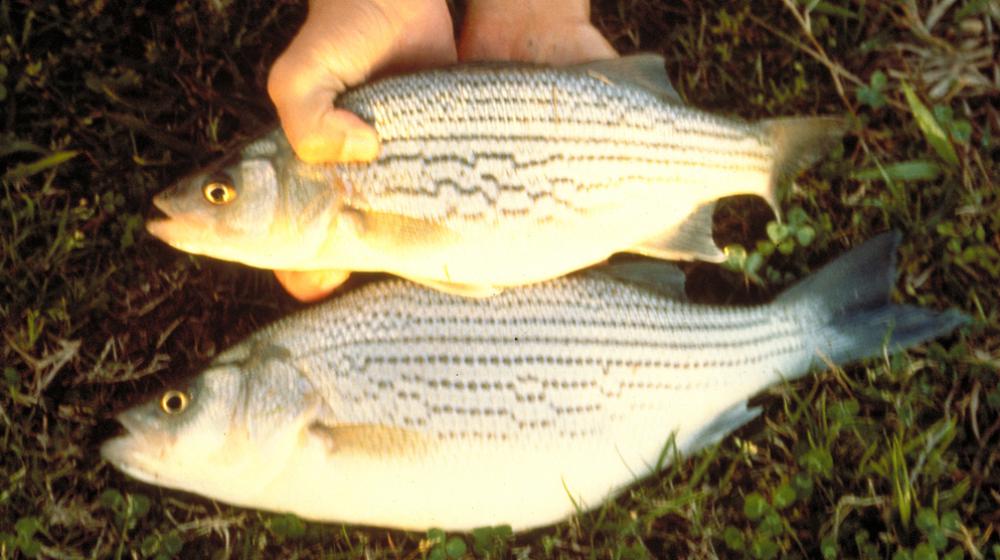Hybrid Striped Bass
Hybrid striped bass are bred by crossing striped bass (Morone saxatilis) and white bass (Morone chrysops). The cross between a female white bass and a male striped bass is referred to as a sunshine bass, while the cross between a female striped bass and a male white bass is referred to as palmetto bass. The sunshine bass is the cross typically cultured.
Hybrid striped bass have been produced by natural resource agencies as a sportfish for many years and are usually stocked in large reservoirs across the southeast U.S. They are also a major part of the U.S. aquaculture industry, with a total production of nearly 8 million pounds in 2012 and an estimated value of $30 million. Hybrid striped bass production in Mississippi is limited to a few pond production facilities and several small-scale intensive tank culture systems. Although production practices are well established for both pond and tank systems, there are several factors that have limited the expansion of hybrid striped bass production in Mississippi.
- Fingerling availability: Production of fingerlings is a very complicated process and usually involves capture of either one or both of the parent species. As a result, fingerlings are available from relatively few sources.
- High input costs: Due to the predatory nature of both parent species, hybrid striped bass require higher protein feeds than omnivorous species like channel catfish. These feeds are considerably higher in cost than the plant-based diets fed to channel catfish. Hybrid striped bass are also less tolerant of low dissolved oxygen or high ammonia levels resulting in higher aeration costs and reduced feeding days.
- Limited markets: Most of the markets willing to pay the higher price hybrid striped bass require are located along the eastern coast of the United States, where patrons have a history of eating striped bass. Although markets could be developed in Deep South, the price point may be somewhat lower.
- Permits: Production of hybrid striped bass requires an aquaculture permit from the Mississippi Department of Agriculture and Commerce. Permits or licenses are also needed to collect parental stocks from the wild.
Other Hybrid Striped Bass Information
Hybrid Striped Bass: Biology and Life History
https://srac.tamu.edu/serveFactSheet/54
Hybrid Striped Bass: Hatchery Phase
https://srac.tamu.edu/serveFactSheet/55
Hybrid Striped Bass: Fingerling Production in Ponds
https://srac.tamu.edu/serveFactSheet/56
Hybrid Striped Bass: Pond Production of Foodfish
https://srac.tamu.edu/serveFactSheet/57
Comparison of Costs of Different Hybrid Striped Bass Production Systems in Ponds
https://srac.tamu.edu/serveFactSheet/270
Feeds and Feeding of Hybrid Striped Bass
https://srac.tamu.edu/serveFactSheet/283


